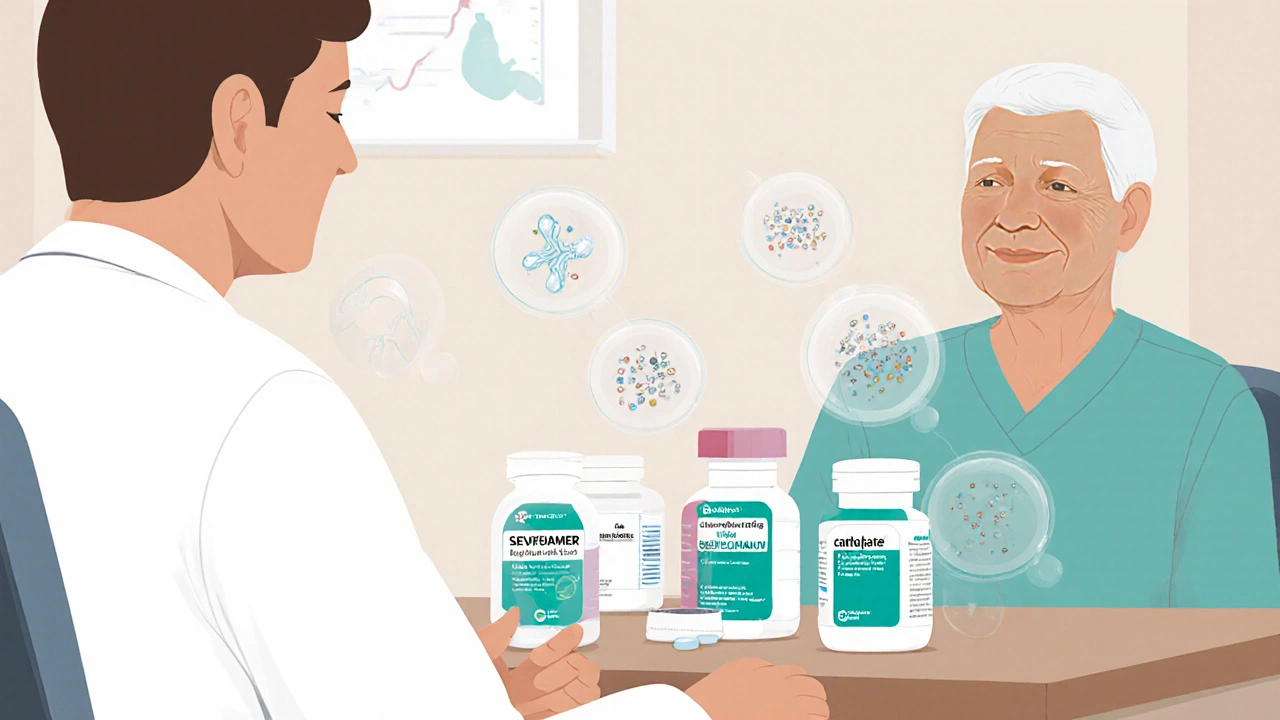Sevelamer: Understanding the Phosphate Binder for Kidney Health
When working with Sevelamer, a non‑calcium phosphate binder prescribed to lower blood phosphate in kidney failure. Also known as Renvela, it helps keep mineral balance in check and protects blood vessels from calcification.
Another key player is hyperphosphatemia, the condition of elevated serum phosphate often seen in chronic kidney disease. When phosphate builds up, it triggers hormonal changes that worsen bone disease and raise heart‑attack risk. Chronic kidney disease, a progressive loss of kidney function that impairs phosphate excretion creates the perfect storm for this imbalance. Patients on dialysis, a treatment that filters waste and excess minerals from the blood rely on phosphate binders like sevelamer to compensate for what their kidneys cannot do. In practice, sevelamer reduces serum phosphate levels, which in turn lowers cardiovascular risk and slows vascular calcification. It also avoids extra calcium load, making it a safer option for people prone to calcium‑based stone formation. Compared with other binders such as lanthanum carbonate or calcium acetate, sevelamer offers the advantage of not adding extra minerals, which can be crucial for patients managing bone health. The drug’s polymer structure binds phosphate in the gut, preventing absorption without affecting other nutrients.
Practical Tips and What to Expect
For anyone starting sevelamer, timing matters: take the tablets with meals to maximize binding efficiency. Common side effects include mild stomach upset or constipation, but most patients adapt within a few weeks. Monitoring labs every month during the first three months helps ensure phosphate stays in the target range of 3.5–5.5 mg/dL. Adjust the dose based on these results, and discuss any persistent GI symptoms with a nephrologist, as dosage tweaks can often alleviate discomfort. Remember that diet still plays a role; cutting back on high‑phosphate foods like dairy, nuts, and colas complements the medication’s work. If phosphate remains high despite optimal sevelamer dosing, clinicians may consider adding a secondary binder or reviewing dialysis adequacy. The overall goal is to keep the mineral balance steady, protect the heart, and preserve bone health while maintaining quality of life.
Below you’ll find a curated collection of articles that dive deeper into sevelamer’s mechanism, compare it with other binders, and offer buying guides for related kidney‑care medicines. Explore the list to get actionable insights, dosage tricks, and safety advice tailored to your situation.


